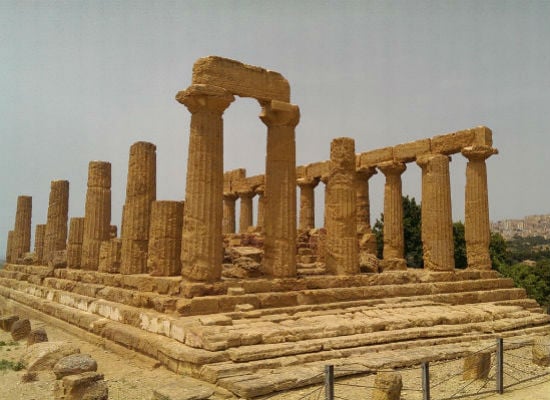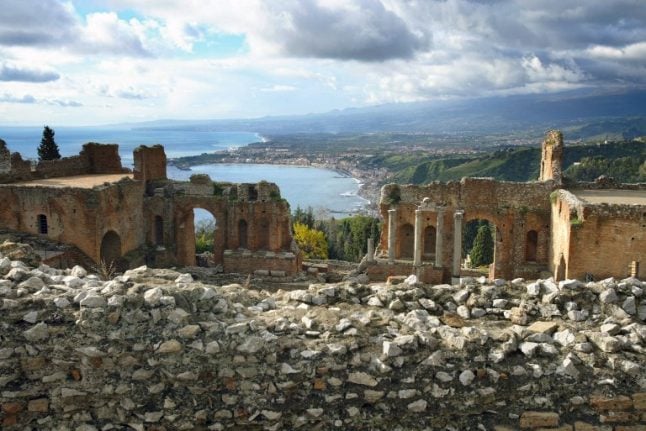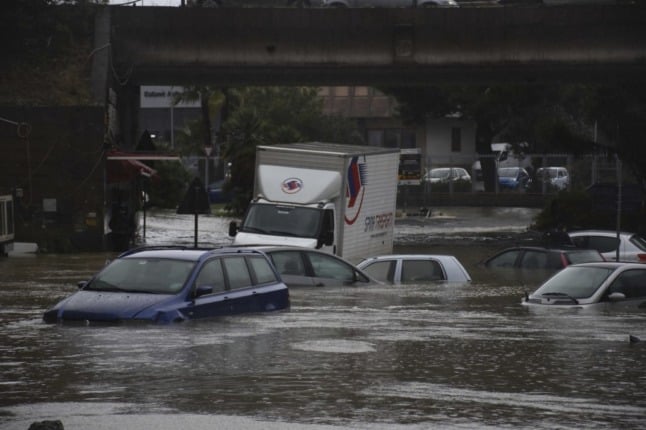Shaped like a boot below mainland Italy, Sicily's PR has sometimes being wrong-footed by popular culture. The island is famous for its wine and Greek pantheons but also, among a plethora of other things, for its ruthless international gangsters – both on and off the screen.
But look beyond the usual Corleone cliches and Sicily is an island rich on subtlety and understated beauty. Many of the island's time-warped landscapes have inspired some of Italy's greatest filmmakers.
Taormina, the hillside town and Sicily's most visited tourist site, recently adapted to host G7 leaders. But it was for many years the home of D.H. Lawrence, Truman Capote, Robert Graves and Hemingway, not to mention the location for dozens of films.
IN PICTURES: World Leaders meet in Sicily for G7 summit
Of Taormina, Lawrence wrote that “here the past is so much stronger than the present.” Lower on the eastern coast is Syracuse, a labyrinth of stone alleyways, temples and castles looking onto the Ionian Sea. The views from Ragusa, a hilltop town that was completely destroyed by an earthquake in 1693 and later rebuilt in baroque style, are breathtaking. Not to mention Agrigento's Valley of Temples – finely preserved odes to the ancient Greek gods.
There are so many paradises on Sicily's triangle-shaped coastline that it is hard to focus on one. But these ten classic Italian films shot in Sicilian locations are a clockwise journey around the coastline. They introduce some of the island's highlights and how they have inspired Italian cinema.
Seaside tragedy
Starting in Aci Trezza, just north of Catania, La Terra Trema, is a classic of Italian neorealism. The story of a gang of brothers and fishermen who try to break free of the shackles of their boats' owners is loosely adapted from the novel The House by The Medlar Tree (I Malavoglia) by Sicilian author Giovanni Verga, who was born nearby in Catania.
Visconti's 1948 tear-jerker heavily influenced subsequent Soviet and post-independence cinema in Africa and Latin America. Today, Aci Trezza remains a quaint fishing village and off the beaten track tourist spot, albeit it less glamorous than its neighbour Taormina.
Syracuse, which is attached to the sinuous peninsula of Ortigia, surrounded by an intact wall, is another favourite with tourists. Ortigia, said to be the birthplace of Artemis, is bathed in history from Magna Graecia to now. Syracuse is also the setting of Vittorio De Sica's final film The Voyage, starring Richard Burton and Sophia Loren.
Hilltop drama
Circumnavigating the eastern corner of the island and moving inland through the vast and endless valleys filled with olive and fruit trees one reaches Ragusa, the hillside town that was nearly wiped away in 1693 by an earthquake. Ragusa Ibla was built in the next century and remains one of the finest exponents of baroque architecture in the region.
Ragusa was also partly the setting for Tornatore's 1995 Academy Award nominated film about a movie fraudster, The Star Maker.
Murder among the temples
Returning to the coast is Agrigento, where visitors are met by more than half a dozen ancient Greek temples. These are perched upon hills beside the city's less than confidence-inspiring spaghetti junction with a view of the ocean behind.
Home of Nobel laureate Pirandello, Agrigento's Valley of Temples is one of the main tourist attractions on the island. The nearby Scala de Turchi (Turkish Steps), a stairwell seemingly sculpted onto the white cliffs, is another highlight for most tourists who visit Sicily.

The Valley of Temples, Agrigento. Photo: Alex Macbeth
Agrigento was also where the excellent and gritty 1976 Francesco Rosi crime thriller Excellent Cadavers was shot.
READ MORE: Skeletons unearthed at Sicily's Valley of Temples
The island of Lampedusa is more than 100 kilometres off the Sicilian coast but it is administered by the city of Agrigento. It is also the setting for the 2002 family drama Respiro, directed by Emanuele Crialese.
Moving towards the south western tip of Sicily, where Marsala wine is made and vast salt fields reflect glorious sunsets, it's the setting of another Francesco Rosi film, the story of the bandit – or freedom fighter, depending on your take – Salvatore Giuliano.
Giuliano rose to fame in the aftermath of the allied landings in Sicily in WW2 and became a contentious figure, equally reviled and revered, on the island.
Moving onto the island's hectic yet majestic provincial capital Palermo, the choice of sites or films to mention broadens dramatically, although Emma Dante's brilliant A Street in Palermo is one of the best contemporary films in this selection.
When two cars meet in a street and refuse to let the other pass, the whole district is soon dragged into the feud. Dante is best known for her role as Carmen at The Scala concert hall in Milan.
READ MORE: Ten reasons to visit Palermo, Italy's cultural capital, right now
Aeolian Island flicks
Away from the northern coast is the magic beauty of the Aeolian Islands, the archipelago that hosts dolphins, hot ocean springs and active volcanoes. The Aeolian Islands are also the home of several films, starting with Roberto Rossellini's 1950 classic Stromboli, named after the volcanic island of the same name. Ingrid Bergman plays an escaped POW in this emotive war drama. A few kilometres away on the island of Panarea, Michelangelo Antonioni filmed the eerie L'Avventura. Michael Radford also shot the Academy Award-winning Il Postino, about Pablo Neruda's postman, on the next island in the archipelago, Salina.
Corleone is famous, among other things, for being the setting of The Godfather, but Taormina, above Aci Trezza on Sicily's east coast, was the location for Godfather Part III – the third installment in Coppola's trilogy. Taormina was also where the film Johnny Stecchino was filmed, in which Life is Beautiful star Roberto Benigni plays a mafia boss and the school bus-driving doppelgänger his wife tries to pass him off as.
Goethe once extolled the snow-capped view from the top row of the town's ancient Greek theatre as “the best view available in a theatre anywhere.” To find out if the German bard was right, head to the TaorminaFilmFest, which takes place in the town's amphitheatre every year in June.
Trailers for the ten films:
Aci Trezza, La Terra Trema (Visconti)
Syracuse, The Voyage (De Sica)
Ragusa, The Star Maker (Tornatore)
Agrigento, Excellent Cadavers (Rosi)
Lampedusa, Respiro (Crialese)
Marsala, Salvatore Giuliano (Rosi)
Palermo, A Street in Palermo/Via Castellana Bandiera (Dante)
Panarea, L'Avventura (Antonioni)
Stromboli, Stromboli (Rossellini)
Taormina, Johnny Stecchino (Benigni)
READ MORE: Cinema's greatest divas revive Italy's golden era




 Please whitelist us to continue reading.
Please whitelist us to continue reading.